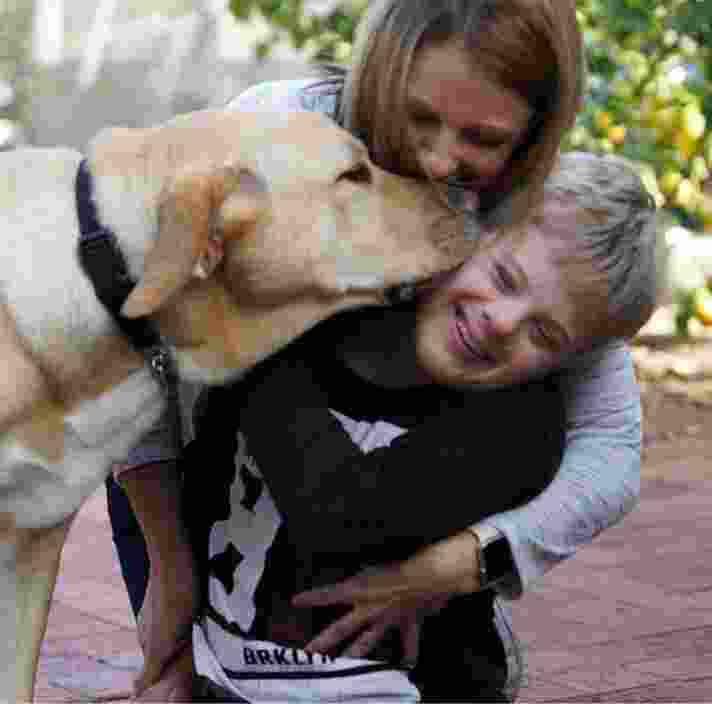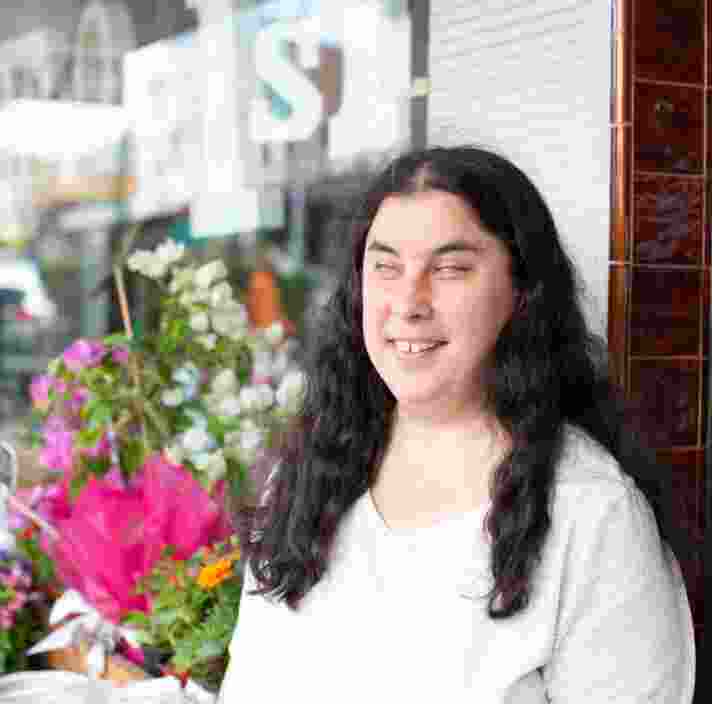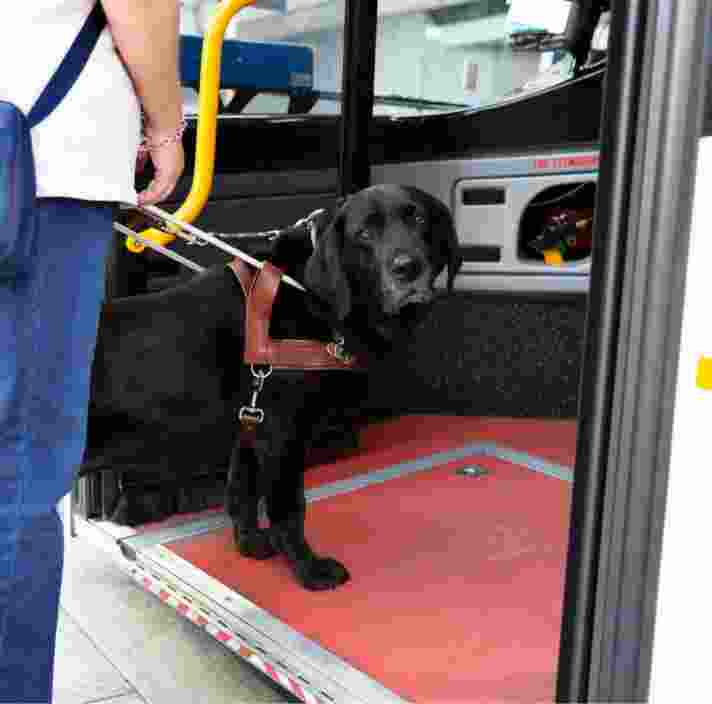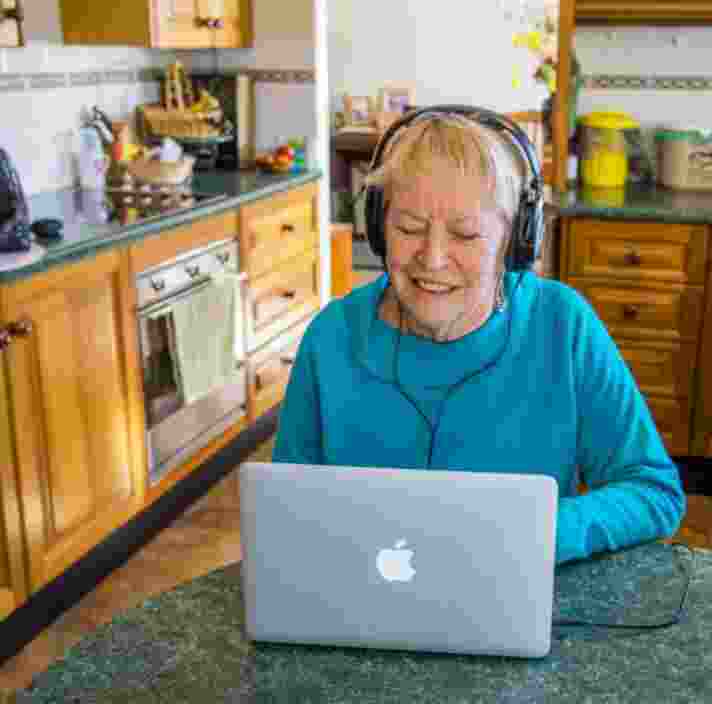On this page:
- What is Orientation and Mobility?
- Orientation and Mobility Services for Children
- Orientation and Mobility Services for Adults
- Guide Dog Mobility Services
- Brain-Based Vision Services
- vLIFE programs
- How can an Orientation and Mobility Specialist assist me?
- What funding can I use to receive Orientation and Mobility support?
- Get in touch for further details
- Enquire about this service
What is Orientation and Mobility?
Orientation and Mobility training is the set of concepts, skills and techniques which increase safe and efficient travel in different environments and under different conditions.
At Guide Dogs NSW/ACT, Orientation and Mobility Services are available to people of all age groups, from babies to older adults:
- Orientation and Mobility Services for Children
- Early Childhood Orientation and Mobility
- School Aged Orientation and Mobility
- Orientation and Mobility Services for Adults and Older Adults
- Guide Dog Mobility
- Brain-Based Vision Orientation and Mobility
- vLIFE programs
Orientation and Mobility Services for Children
- Early Childhood Orientation and Mobility
From an early age we learn to interact with the world through safe play, observing and exploring new environments. We learn about ourselves, each other, and how to be part of a community, while developing confidence as we grow.
Children with low vision or blindness are no different. However, they need to develop a varied set of skills to understand and move through the world. These skills are taught in our Early Childhood Orientation and Mobility Services designed for children aged 0-8 years, where a specifically Early Childhood trained Orientation and Mobility Specialist will work collaboratively with you and the child’s support network.
- School Aged Orientation and Mobility
School aged children need to develop they confidence and be independent, be an active part of the school and local community. It is important for young people aged 9-18 years to focus on their Orientation and Mobility goals as well as academic goals.

Orientation and Mobility Services for Adults
It is important to be able to move safely and independently through the world to live life the way you want. Orientation and Mobility Services offer practical skills to keep everyone moving with confidence, regardless of their age.
Whether you have experienced long term low vision, a recent change in vision, or you are gradually losing sight, Orientation and Mobility Services can assist you to build your capacity and independence and achieve your goals. This support is designed for people aged 18 years and above.

Guide Dog Mobility Services
Guide Dog Mobility Services support you to establish a trusting partnership with your Guide Dog, matched to your individual needs. Guide Dog Mobility can allow you to walk freely and feel confident moving through your world.
Guide Dogs are trained to help you navigate your daily environment and beyond. Thanks to their unique skills, Guide Dogs can recognise obstacles, move through large crowds with ease, board public transport and assist you in crossing busy roads, to get you almost anywhere you need or want to go.
Our Guide Dogs Mobility Instructors (GDMIs) can assist you to work towards your goal, match you and partnership with your Guide Dogs.

Brain-Based Vision Services
If you experience changes to your vision due to a neurological condition or brain-based event, like a stroke or head trauma, our Brain-Based Vision Services can assist you. To ensure you can stay as independent as possible and work towards your goals, our specifically trained brain-based Orientation and Mobility Specialists can assist you to adjust to these changes through development of new skills and finding the best compensatory strategies for your brain-based vision condition.

vLIFE programs
If you are over 50 years of age and experience decline in your overall confidence in your mobility and you have low vision or blindness, our vLIFE program, delivered by specifically trained vLIFE Orientation and Mobility Specialists can assist you to improve your strength and balance and increase confidence in your mobility, whilst completing your everyday activities.
How can an Orientation and Mobility Specialist assist me?
Guide Dogs NSW/ACT Orientation and Mobility Specialists are highly qualified in vision rehabilitation field, with majority holding international Orientation and Mobility Certification (COMS).
They understand your vision and circumstances and provide flexible services based on your individual situation. They can meet you at home, in the community, provide services in person or through telepractice (e.g., over the phone, or on a video call) to:
- Explore how your level of vision impacts your ability to move around safely
- Assist you to identify and work towards your orientation and mobility goals
- Provide advice and training on how to best use your vision when moving through the environment.
- Discuss and demonstrate how different technologies such as mobility aids (e.g., cane or electronic device) or GPS might be able to assist you
- Teach you orientation techniques and strategies for safe mobility
- Review and make recommendations to increase your safety in the environments you are required to travel within.
- Build your capacity to advocate for better environmental access in your local community
What funding can I use to receive Orientation and Mobility support?
Guide Dogs is a registered NDIS provider and My Aged Care provider. This means many people can access Orientation and Mobility support services through their NDIS plan or Home Care package. Find out more about funding programs and supports.
We understand that sometimes people who need services may not be eligible to receive government funding. If you have low vision or blindness and you do not have access to external funding, we will support you to achieve your goals using funding provided by generous donations from the community.
Get in touch for further details
How do I find out further information?
We welcome referrals and enquiries from individuals, families, health professionals, educators, and community organisations.
If you would like further information about our Orientation and Mobility services, please:

